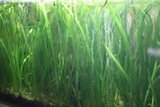aquariumboy
Aquarium Advice Regular
Is k important in planted tanks?
Sent from my LG-P659 using Aquarium Advice mobile app
Sent from my LG-P659 using Aquarium Advice mobile app
Kelvin on the other hand, is a lights color temp, and you generally want that at 6500-8000*k for plants. Then you have PAR values, which come onto play for determining low to high light situations
So which is better on a 20 gallon high tank: one 15 watt 6500k fluorescent tube or 2 x 20 watt 2700k cfl?
Sent from my LG-P659 using Aquarium Advice mobile app
Neither will grow anything but low light plants..
Sent from my SAMSUNG-SM-G900A using Aquarium Advice mobile app
Will 2 14 watt 2700k be good?
Sent from my LG-P659 using Aquarium Advice mobile app
5000K is perfectly fine, and in my experience better than 6500K or higher. However, there is more to it than just the kelvin temp. The actual wavelengths of red and blue light available vary from bulb to bulb even from the same manufacturer. A bulb with a high Colour Rendition Index (CRI) is more likely (I believe) to have a good complement of the right colours of light for good plant growth. Keep in mind that the colour temp of sunlight at noon, on the equator, is around 5500K, not 6500K and not 8000K.
True but I think this is meant for a low light tank. 5000k lights are generally reddish and it may be harder to find low light red plants.


